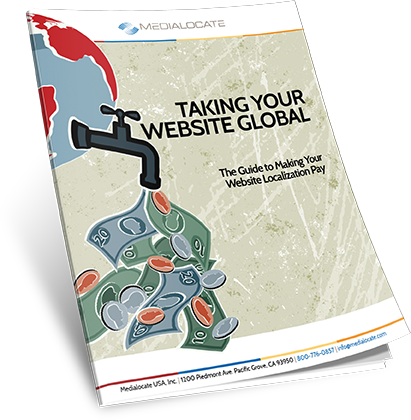
Effective hand-off of content to a Language Service Provider (LSP)
(This is the second of a two-part article on Setting Up a Content Management System for Localization. Part 1 is here)
Content to be translated undergoes several processes:
- Authoring and review: As with other publishing functions, content should undergo editorial review before being sent to an LSP, to eliminate needless re-translations.
- XML files: Once the content has been reviewed, populate XML files and directories with your translation-ready source content.
- Uploaded files: The XML files are uploaded onto a server that is accessible by your LSPs.
- Notification: LSPs are notified that a translation job is ready. They will then access the material for translation. One simple approach to notification is by automatic email notification and let them access the files. Alternatively, if your LSP has the capabilities, you can push out the source files to them, in which case you should receive an acknowledgement that the files have been received.
Internal processes for importing the translations into the Content Management System (CMS)
Once your content has been translated, it will be sent to one of your servers by your LSPs. Define a function to notify you that a translation job is complete and produce a report on which jobs were completed, which languages, and word counts.
Since translations require internal review before their importation into your CMS, a staging area should be developed to hold the translations, pending verification. This site should have the capability to support linguistic review by displaying source and target content, including contexts. Functionality for in-context verification by linguists will ease the review process tremendously. These checks include translation accuracy of terminology and whether DNT terms are handled correctly.
In addition to the staging site, processes and guidelines must be established. These include translation review guidelines, accuracy thresholds for accepting or rejecting translations, and sampling instructions indicating how much of the translated material should be reviewed.
Translated Content Imported into a Content Management System (CMS)
Once reviewed, your translated content will be imported into your CMS. Each document in your source will have one or more translated versions, and each translation will have the same document identifier as the source document. However, each translation will have a different language identifier. Importing a new translation will follow the same flow as with other documents in your CMS.
The re-introduction of translated content into the XML file requires unique document, content, and positional identifiers. If the identifier of two documents is the same but the language identifiers differ, then translated content can be put into the same position as in the original source.
With careful design of XML identifiers, processes and mechanisms, the flow of information between a CMS and your LSPs can work smoothly and efficiently.
(This is the second of a two-part article on Setting Up a CMS for Localization. Part 1 is here)
Have questions about what you’ve read in this article?
Contact us at 831-655-7500 or
Email: [email protected]
Click Here for Your Free Report: “Web Localization – Taking Your Website Global”
Learn the fast, efficient, and most effective way to translate your website
and online content into additional languages.













